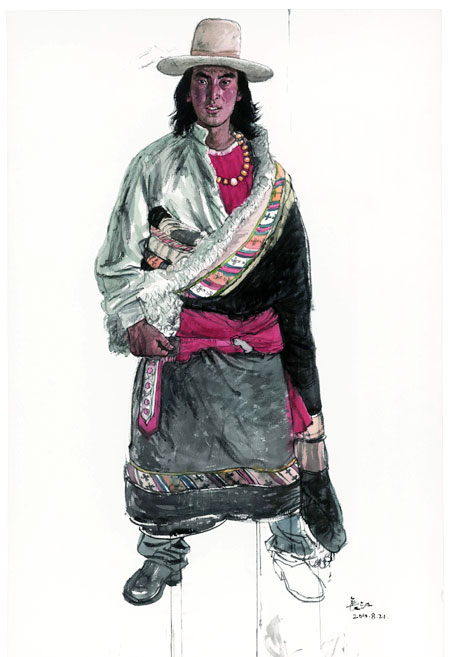|
 |
|
Unfinished Portrait of a Young Man, a painting Wu failed to finish when the man had to leave.Photo provided to China Daily
|
The late artist Wu Zuoren (1908-97) was a pioneer of this convention.
His sketch books from his time in Tibet in the 1940s inspired many followers, including Dong Xiwen, Wu Guanzhong, Pan Shixun and Chen Danqing. The books are stored in the China Central Academy of Fine Arts' library.
Wu visited Chen Danqing, who was then a postgraduate student at CCAFA, to see his sketches of Tibet.
"That glimpse made me more excited than ever," Wu recalls.
Wu had longed to create works portraying the busy coastal life of his hometown, Tianjin's Hangu - harbors, fishermen and sailors.
But he says he'd never felt such potent passion until he arrived in Tibet.
"That trip changed my life," Wu says.
"I fell in love with the landscape and people."
He recalls waking one morning to a snowy wonderland, the whiteness of which was broken only by a tent and several black yaks. He says he was completely enamored by the strongest contrast between the two colors he'd ever seen.
The artist found Tibetans to be as beautiful as the land they inhabit. Their lives are so different that he wonders if they came from another world, he says.
Wu returned from Tibet with a full heart but virtually empty-handed.
"I'd never struggled so much with the limitations of my skills to paint what I saw," he says.
So, Wu returned to Tibet and stayed for two months to complete his capstone works for graduation the following year.
It wasn't easy for painters from other places to work on the plateau then. Transportation was limited, and the Tibetans were virtually sealed off from the outside.
Natural challenges, such as thin air, fierce winds and icy temperatures, were complemented by such interpersonal challenges as language barriers and cultural differences.
But Wu's greatest challenge was posed by the bristling mastiffs every Tibetan nomad kept outside his tent.
|



